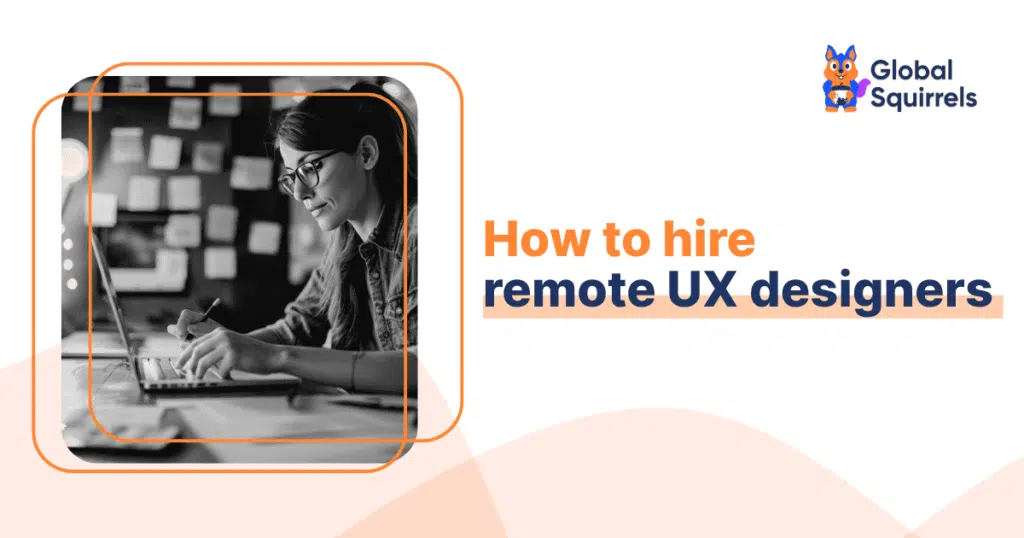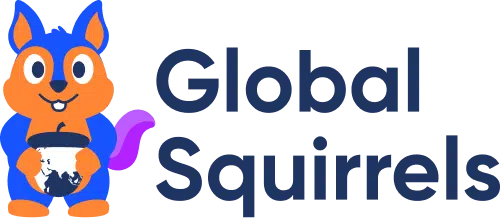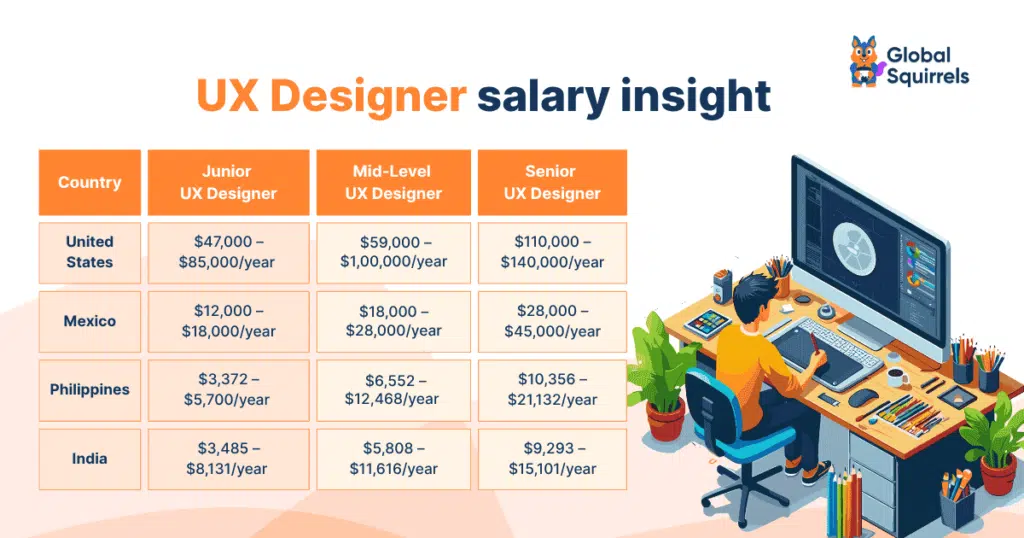How to hire remote UX designers

In the current technologically advanced world, user experience or UX is no longer a privilege to have; it is, in fact, a business differentiator. From launching a new app, redesigning a website, to optimizing customer journeys, a great UX design could directly have an impact on the conversion rates, brand perception, and user retention. However, with the design talent spread across the globe, multiple companies are increasingly turning to remote UX designers to bring efficiency, innovation, and creativity to their businesses. The challenge here is hiring the right designer who not only understands the user psychology but can also thrive in the remote set-up.
In this blog, we have discussed everything you need to know about hiring a remote UX designer, from defining the business needs and evaluating portfolios to navigating collaboration and ensuring cultural fit.
What does a UX designer do day to day?
A remote UX designer plays a very important role in shaping how users interact with an online product, ranging from the first click to the final conversion. Even though these talents work off-site, their impact is deeply felt across development, products, and marketing teams.
Some of the key responsibilities outlined in a UX designer job description for remote roles include:
1. User analysis and research
Remote UX designers start by understanding the user’s goals, pain points, and behaviour patterns. They also conduct interviews, surveys, analyse data, and usability tests to efficiently gather actionable insights that will help the professional in making design decisions.
2. User journey mapping and personality development
UX designers tend to create journey maps and user personas to visualise the end-user experience and identify the opportunities to improve engagement, satisfaction, and usability.
3. Creating wireframes and prototypes
Using tools such as Sketch, Adobe XD, or Figma, remote UX designers will develop wireframes and interactive prototypes to demonstrate the user flows, core functions, and layouts before the entire development begins.
4. Information architecture
UX developers organize and structure content with the UI designers for visuals and front-end developers for implementation purposes. In remote teams, this collaboration will happen through async updates, design documentation, and handoff tools.
5. Iteration of feedback and usability Testing
In order to continuously improve the experience, UX designers must evaluate user behavior, spot drop-offs, and iterate based on real-world data even after the design is live.
6. Alignment of stakeholders and remote communication
Being able to communicate effectively is essential when working remotely. Whether using Zoom, Loom, Slack, or comprehensive design briefs, UX designers must advocate for the user, convey concepts, and explain design reasoning in a virtual setting.
In simple terms, a remote UX designer is not just a visual creative and thinker; they are a strategic partner in building a meaningful and user-centered digital experience. With the correct procedure and tools, the distance is never a barrier to delivering an impactful design.
Why should I hire a remote UX designer?
Remote UX designers are frequently contract or independent specialists who are prepared for a job. Faster turnaround times are made possible by this, particularly for businesses that want to launch or iterate rapidly without having to deal with drawn-out hiring cycles.
As user experience is becoming a top priority for businesses, the demand for skilled UX designers is continuing to rise. However, finding the right talent, especially within the local markets, can be majorly slow, costly, and competitive.
This is why an increasing number of companies are turning to remote UX designers to bridge the gap. Whether you are building a new product, refreshing a legacy system, or optimizing the digital journeys, remote UX professionals bring creativity, global perspective, and flexibility without worrying about the overhead costs that accompany traditional hiring.
Some of the key benefits are:
1. Access to global talent:
Hiring a website designer is not limited to the local market any longer. You can tap into a worldwide pool of talented UX designers with diverse backgrounds, design sensibilities, and skill sets, therefore helping in building products that resonate across user types and cultures.
2. Cost efficiency:
Hiring a product designer will often reduce the overhead costs associated with in-office and full-time roles. Depending on the region, you can save on office space, equipment, and very often, even salaries, without having to compromise on the quality.
3. Quick onboarding and hiring:
Remote UX designers are often project-ready professionals and freelancers. This will allow for faster turnaround time especially for companies who are looking to launch or iterate quickly without any lengthy recruitment cycles.
4. Fresh innovation and perspectives:
Remote designers will work with clients across multiple cultures and industries. They will bring unbiased and fresh perspectives, which can spark innovation and help challenge the outdated UX patterns or internal design assumptions.
5. Design flexibility and agility:
Whether you need help for a one-time UX audit or an ongoing product redesign, remote designers will offer scalable engagement models. You can bring them in short-term or long-term timelines based on the product development cycles and roadmap.
6. Varied expertise in collaboration tools:
The remote UX designers are well-versed in using collaboration and design platforms like Miro, Figma, Slack, Notion, Jira, and Loom. Their expertise in asynchronous communication will make it easy for you to stay in sync even across multiple time zones.
7. Constant progress:
By hiring a remote UX designer from multiple regions, you can maintain nearly 24/7 design cycles. This will accelerate the design sprints, especially in the cross-functional product teams who are working under tight deadlines.
8. Focusing on the outcomes rather than the hours:
The fact that remote UX designers typically operate on a project or milestone basis promotes an emphasis on output and quality rather than just time spent. Measurable results are obtained, frequently more quickly than with a conventional setup.
When should you hire a remote freelancer or a full-time employee?
In the current flexible work landscape, businesses have more hiring options than ever before. Whether you are launching a product, tackling a one-off project, or scaling a team, the choice between hiring a remote freelancer or a full-time remote employee could make a major impact on the timelines, outcomes, and budget.
Hire a freelancer when you:
- Need help with a short-term project like an MVP, app redesign, or landing page
- Feel the design needs are project-based or occasional, and not ongoing
- Require flexibility in location, budget, or working hours
- Want to save on the overhead costs
Hire a full-time remote UX designer when:
- The design requirements, whether for internal tools, mobile devices, or the web, are constant or expanding.
- Continuous feature releases and design iterations are part of your product roadmap.
- You are looking for someone who can work closely with their marketing, development, and product teams.
How much does it cost to hire a remote UX designer?
The cost of hiring a remote UX designer varies significantly depending on the experience level, location, and project complexity. Here is a quick breakdown to help estimate the budget based on where the talent is located:
Source: Glassdoor
Challenges of hiring a remote UX designer
While hiring a remote UX designer will offer flexibility and access to global talent, it is not without challenges. Therefore, successfully integrating a remote designer into the product or design workflow will require strong communication, careful planning, and the right tools.
Here are some of the common challenges you may encounter:
Long hiring time if there’s no physical entity
Setting up an entity is probably the most important step if you wish to hire UX designers offshore. But, doing so incurs substantial time, cost, and resources. Establishing an entity costs upwards of $30,000, and then you also need to obtain a ton of approvals from various authorities. This, along with documentation, can take several months before you can actually start the hiring process.
Complexities in the global payroll
Every country has its own rules and regulations, making it quite difficult for companies unfamiliar with the global hiring landscape to manage them simultaneously. The most challenging areas include taxes, statutory benefits, labor laws, employee-contractor classification, etc. Failure to comply with these can lead to hefty fines, damaged reputation, and potential legal suits.
Talent’s exclusivity to the project
When you hire a contractor for, let’s say, eight hours a day, you may not get the guarantee that he will work diligently on your project. Chances are that he may also be working for another client. Thus, you may be paying him for those eight hours, but on the other hand, he’s only working for barely four hours.
How does Global Squirrels simplify hiring a remote UX designer?
In the current digital work, a unique design is not optional; it is a need. Whether businesses are launching a new app, improving the product usability, or revamping the website, hiring the right UX designer could break or make the user experience.
However, finding the top talent is just half the battle. Hiring these talents remotely without getting tangled in legal, compliance issues, and payroll. This is where Global Squirrels comes into play. This is a smarter, faster, and fully compliant way to onboard remote UX designers from multiple parts of the world.
Global Squirrels offers staffing plans to companies that want to either onboard a designer of their own or source externally. However, we ensure that the talent is onboarded in days and not weeks. Additionally, businesses would not have to set up a local entity or deal with the jurisdictional hiring complexities.
When businesses work with Global Squirrels, they can pay their designer in their local currency, with the taxes and statutory deductions handled by Global Squirrels. Therefore, companies can focus on the product UX while we handle the compliance.
Global Squirrels’ staffing platform includes remote employee management tools, such as a one-time/recurring task assign feature and performance tracking with start, go, and stop buttons. These tools ensure remote designers stay aligned with your company’s goals. In the offer letter/contract shared with your hired resource, we clearly outline the scope of work, timelines, and other essential details related to the employment, including exclusivity to the company, notice period, and other relevant terms.
Simple steps to your next great UX hire
If you are looking to hire a remote UX designer and also outsource the recruitment and EOR services, the Orange Plan will be a great fit. If you want to onboard a self-sourced talent, pick the Purple plan, which covers the payroll and benefits administration of the onboarded talent. However, if you prefer having better oversight of the hired professionals, choose the Blue Plan to hire UX designers who will work from one of our managed offices located in India, the Philippines, or Mexico.
Here are the steps to hire and manage UX designers using our Orange Plan:
- Create an account and post your job requirement for free. Mention the desired hiring location, for instance, India, the Philippines, Mexico, etc.
- You will receive an email notification to review three curated profiles on the portal within two to five business days.
- Interview potential hires and shortlist for onboarding.
- Review and accept the offer letter, then pay the onboarding deposit for your new workers, which is a one-month hiring fee equal to the payroll cost and flat license fee.
- Global Squirrels will onboard the remote UX designer and handle all HR-related tasks, including compliance, payroll, and benefits.
Sounds interesting?
You can also take a tour of how our platform works.
Ready to hire top UX designers for your projects? Sign up and post your job for free!

